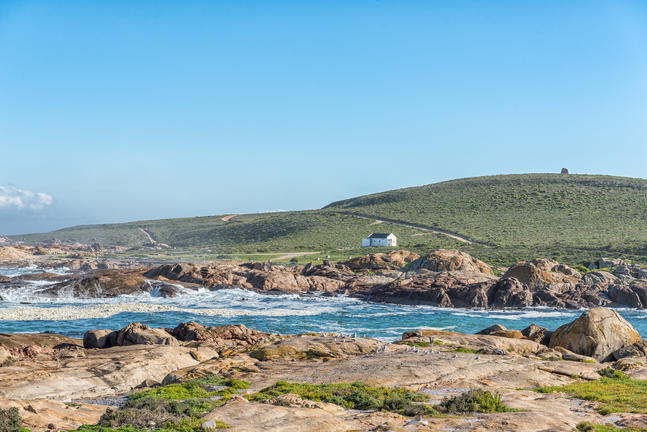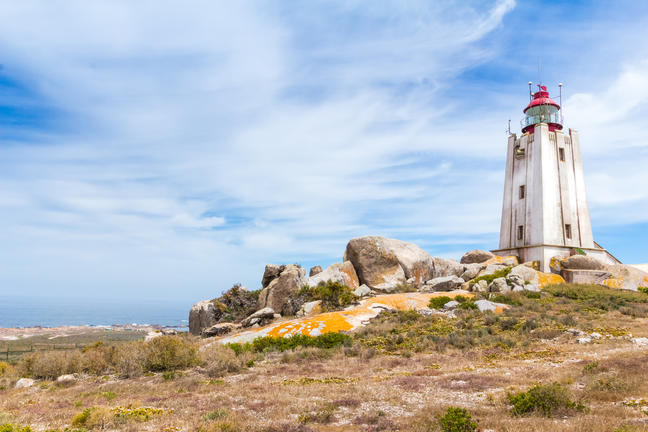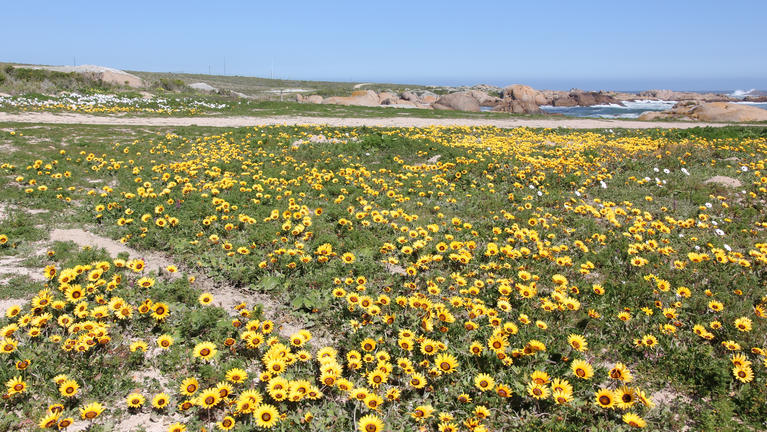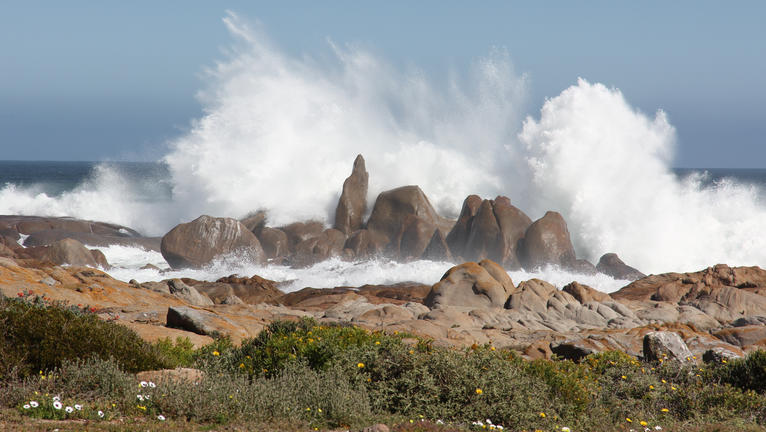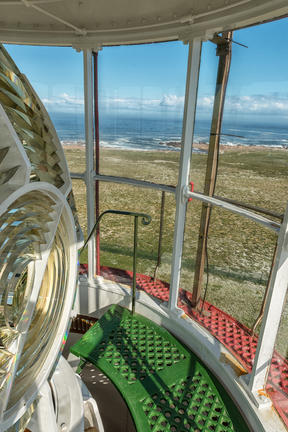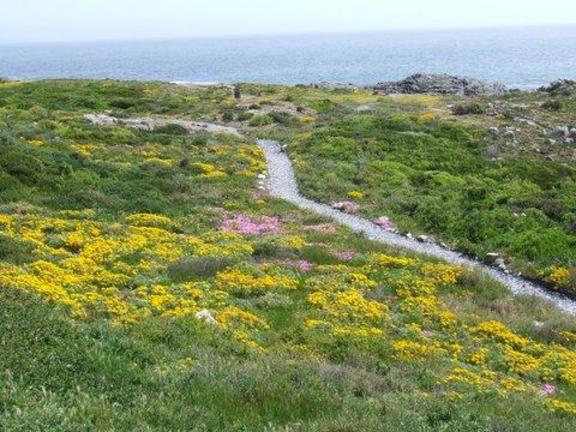In 1829, the British wooden ship ‘Columbine’, was wrecked on the West Coast of South Africa. As a result, a lighthouse was built 1.5kms north of the wreck, in 1936, on Castle Rock. It is the first South African lighthouse to be seen by ships sailing from Europe and South America, and the last manually controlled lighthouse to be built in South Africa. In December 1973, the wreck gave its name to the Cape Columbine Nature Reserve. The locals simply call it Tietiesbaai.
This reserve is the most westerly destination in the Western Cape and lies on a peninsular that covers 263 hectares of gorgeous wild, rocky coastline, with numerous inlets and coves.
What makes the Cape Columbine Reserve particularly special is the typical West Coast vegetation. From the well-known West Coast fynbos to Karoo succulents and, from August to September in Spring, the vast fields of wildflowers turning the rugged landscape into a bright tapestry of colour and delight.
The huge round rocks inside the bays, the wild land and the ocean vistas make the reserve a favourite space for visitors. Add to that, the sightings of dolphins and whales, and the opportunity to kayak these inlets and shoreline makes the Cape Columbine Nature Reserve a destination to return to again and again.
Entrance to the reserve is about 5km from the fishing hamlet of Paternoster and there are two campsites to choose from. The one gives guests the chance to snuggle in amidst the giant boulders really close to the water, making it ideal for a scuba diving and fishing. The other is the Beach Camp. A-frame huts or tents right on the beach and with comfortable beds as well as eco-friendly ablution facilities.
With delightful camping locations, access to beautiful hiking trails and unforgettable sunsets right on the Atlantic Ocean, angling, bird watching, diving, and kayaking, camping doesn’t get much better than this.
